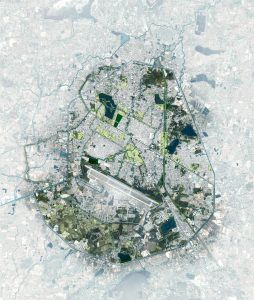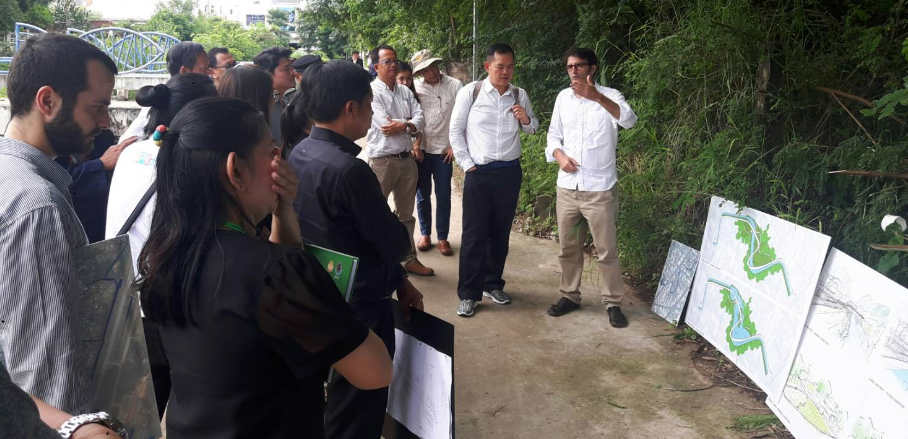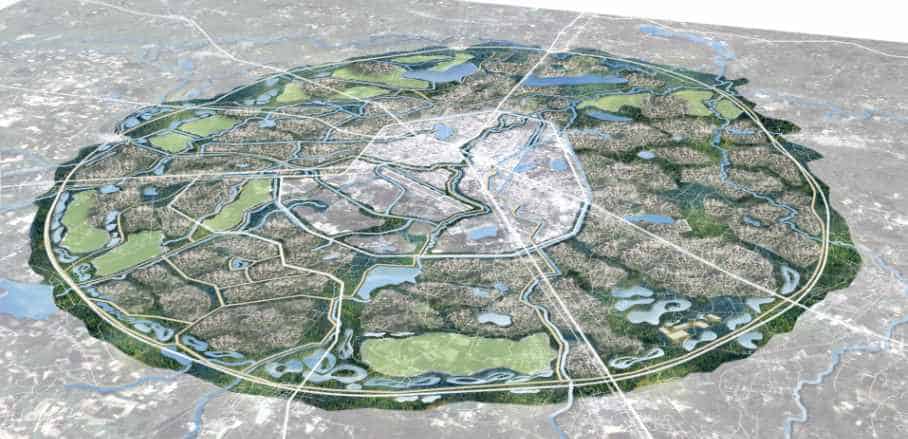Mainstreaming Nature-Based Solutions Towards Urban Climate Resilience – A Green Infrastructure Master Plan for Udon Thani in Thailand
Mainstreaming green infrastructure could serve as a pathway to strengthen urban resilience to climate change. Ignacio Ortinez and Guillermo Mendoza on new approaches using Nature-based Solutions.

Green Infrastructure Master Plan for Udon Thani 2018 © estudioOCA – UCRISP 2018
There is a growing interest in the implementation of Nature-based Solutions such as green infrastructure to enhance urban resilience to increased floods and droughts resulting from climate change as well as rapid urbanisation. On the one hand, it provides a highly adaptable solution to reducing the risk of losing urban services and infrastructure integrity as well as mitigating inequitable societal impacts. On the other hand, they provide multiple benefits, such as improving the quality of life in new jobs and recreation space, reducing the urban heat island effect, and carbon sequestration. However, the implementation of green infrastructure is not yet generally established, as only a few examples of a systematic planning approach integrate the discounted benefits and costs analysis potential to mitigate possible future floods and droughts.
Collaboration is Key to Innovation
Mainstreaming nature-based solutions as a means for urban climate resilience is challenging. Often times they are neither standardised in planning, design, and procurements nor in operations. Moreover, they contain two atypical concepts. The first concept concerns integrating green infrastructure with the conventional ‘grey infrastructure’ as part of a formal engineering system designed to buy down risk. The second concept involves planning for resilience to climate change, which essentially translates to justifying the benefits and costs of a project against a deeply uncertain future. In practice, such concepts are difficult to overcome and often site-specific. The ability to collaborate through shared experiences across agencies and areas of expertise enhances the transition from theory to practice and then to mainstreaming.
In effect, the authors shared experiences in climate adaptation planning from the perspective of engineering design by a government agency responsible for water resources management as well as from the perspective of a landscape architecture, urban design and planning firm. Specifically, an innovative framework called Climate Risk Informed Decision Analysis (CRIDA) – a UNESCO initiative –, which focuses the planning objectives towards avoiding known chronic unacceptable failure as opposed to a planning objective based on an unknown future projection. CRIDA’s approach considers developing projects in complex environments, where little data is available, to help develop key analytical tools such as hydrological model analysis. These elements provided an evidence-based strategy that helped facilitate and accelerate the implementation and development of projects in critical contexts such as Udon Thani, a secondary city in a middle-income country.
Grey Infrastructure Cannot Cope with Extreme Climatic Events
Facilitated by estudioOCA-UCRISP, an NGO focusing on building climate resilience in urban and rural contexts, and USACE (US Army Corps of Engineers) the overall novelty of the approach was based on the principle of collaboration. The participation of project stakeholders constituted another significant factor. allowed the team to start focusing on specific tasks and areas. In parallel, the hydrological modelling stress test analysis helped identify areas and conditions where the existing grey infrastructure system would not be able to cope, in particular under extreme climatic events that are becoming more common each year – especially in many tropical areas around the world, such as Udon Thani. The model was developed together with the local municipal engineering department, USACE, and estudioOCA-UCRISP teams. It integrated all existing stormwater management infrastructure in the city, including pumps, canals, gates, and an underground drainage system. The model helped identify issues and areas where green infrastructure could be integrated with the existing system and help mitigate deeply uncertain flood risks while meeting quality-of-life objectives.
The Master Plan’s Extension – Looking at Climate Risk Issues at a Larger Scale
The project entailed four main green infrastructure design strategies: canal restoration projects, green streets, retention parks, and wetlands conservation areas/parks. As a result of the strategies analysis developed during the first workshop, a series of approaches were designed, identifying a total of 14 green infrastructure projects for the city. Finally, a cost-benefit analysis of all proposed projects was developed, providing the city with a complete feasibility package that they could use to find funding for the proposed projects and strategies. Municipal leaders presented the project’s results to the Thai government, which then provided funding to the proposed projects, which are now under development.

estudioOCA – UCRISP director Ignacio Ortinez addressing project stakeholders about proposed Nature-based Solutions projects © estudioOCA – UCRISP 2018
Hopefully, these experiences can foster new collaborations with other professionals, universities, development organisations, and institutions – including cities and governments around the world. Moreover, the extension of the green infrastructure master plan project is in progress, this time focusing on the peri-urban area of Udon Thani, which is looking at climate risk issues at a larger landscape scale.
Secondary cities in low-income countries are some of the fastest-growing urban areas in the world that will face increased flood and drought risk while having the limited institutional capacity to adequately plan and prepare. This trend will be exacerbated by climate change. This collaborative evidence-based approach is an important advancement to a more sustainable and secure future.
